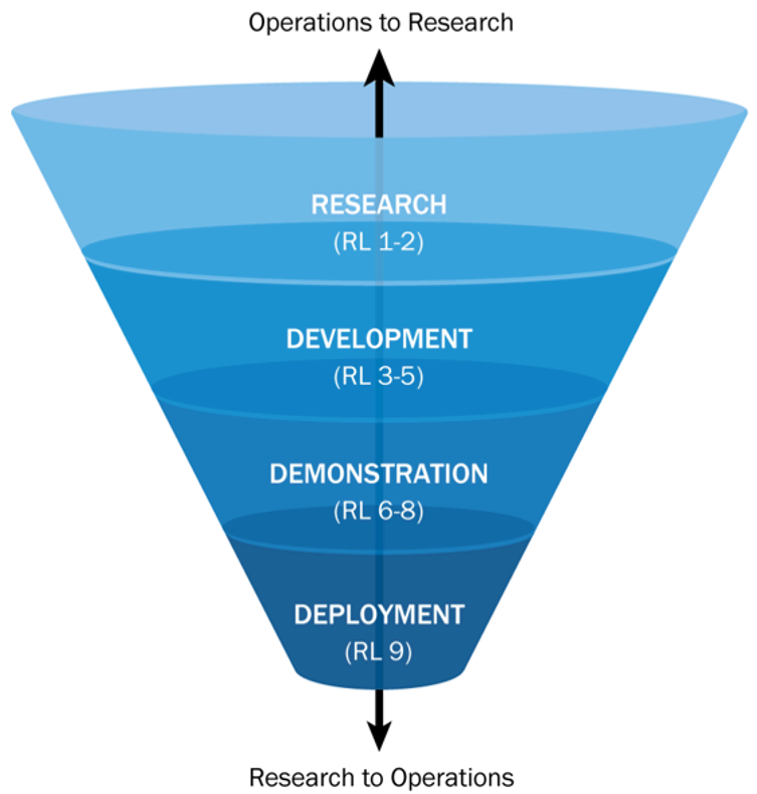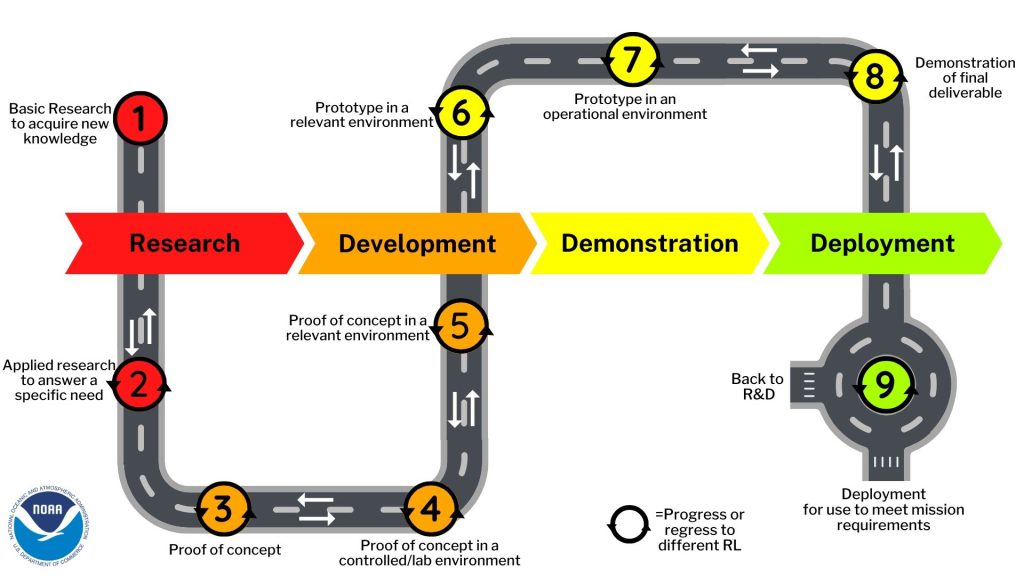NOAA Readiness Levels
Readiness Levels are a systematic project metric or measurement system that supports assessments of the maturity of R&D projects for transition from research to operation, application, commercial product or service, or other use and allows the consistent comparison of maturity between different types of R&D projects. NOAA’s Policy on Readiness Levels can be found in NAO 216-115A.
There are 9 Readiness Levels as follows:

Basic research, experimental or theoretical work undertaken primarily to acquire new knowledge of the underlying foundations of phenomena and observable facts, without any particular application or use in view. Basic research can be oriented or directed towards some broad fields of general interest, with the explicit goal of a range of future applications (OECD, 2015).
Applied research, original investigation undertaken in order to acquire new knowledge. It is, however, directed primarily towards a specific, practical aim or objective. Applied research is undertaken either to determine possible uses for the findings of basic research, or to determine new methods or ways of achieving specific and predetermined objectives (OECD, 2015).
Proof-of-concept for system, process, product, service, or tool; this can be considered an early phase of experimental development; feasibility studies may be included.
Successful evaluation of system, subsystem, process, product, service, or tool in a laboratory or other experimental environment; this can be considered an intermediate phase of development.
Successful evaluation of system, subsystem process, product, service, or tool in relevant environment through testing and prototyping; this can be considered the final stage of development before demonstration begins.
Demonstration of a prototype system, subsystem, process, product, service, or tool in relevant or test environment (potential demonstrated).
Prototype system, process, product, service or tool demonstrated in an operational or other relevant environment (functionality demonstrated in near-real world environment; subsystem components fully integrated into system).
Finalized system, process, product, service or tool tested, and shown to operate or function as expected within user’s environment; user training and documentation completed; operator or user approval given.
System, process, product, service or tool deployed and used routinely.

